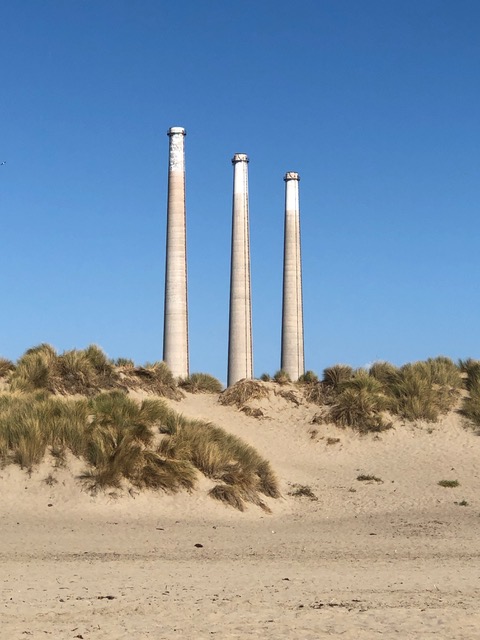We loaned our home to our daughter and a passel of young women for a bachelorette party, so we had to suck up the inconvenience and find someplace to stay. Gray's Inn on the bay wasn't too bad!
Here's a sunrise shot of Morro Rock, the bay's namesake.
People come from far and near to play here. Foreign languages intermingle with the rapping of rigging and the cries of gulls.
Stand-up paddle boarding is a wonderful way of getting close to the wildlife. I had brown and white pelicans gliding within 20 feet of me, was squawked at by great blue herons resting on moored boats, and enjoyed watching otters harvesting shellfish from hulls, then knocking them against each other to crack them and nibble away.
A dock moored in the open has been commandeered by sea lions and seals, perhaps 50 wedged between and atop one another. I've never gotten a good count because they're a big pile of blubber -- when one slides into the water, others just ooze into the vacated space. This day I noticed a body partially in the water and couldn't tell if the tail was submerged, or maybe the head. Eventually this seal pulled her head out of the water to take a breath, looked around languidly, and let it drop back under. Awhile later, the same. She waved her flippers around a bit, testing the possibility of nudging a neighbor over, gave up and let her head drop in again. It just wasn't worth the trouble. These guys are pretty relaxed!
Paddlers, surfers and shorebirds play in the ocean waves north of the Rock.
Not far east across the dunes are The Stacks.
The PG&E plant was decommissioned, but The Stacks live on in controversy. Many hate their ugly, industrial intrusion on the beautiful scenery, others who have seen them since, it seems, time immemorial, find them iconic. Since my parents were reared not far south, these have been part of the view all my life, and I've found them in those old postcards with tinted photos. So I'm on the iconic side, and I enjoy their juxtaposition with The Rock, each equally massive, one like a smooth, rigidly symmetrical modern sculpture, the other fully natural, textured, and geologically interesting.
Morro Rock is a volcanic plug or neck, one of many that formed near one another 25 million years ago.
This set of volcanos, sitting on the Pacific Plate, traveled north as the North American plate shifted south; they arrived at their present location, 300 miles northward, moving at the pace of a fingernail growing. I'm afraid they haven't stopped moving! But for now they make good climbing in San Luis Obispo County, excepting Morro, which is for the birds. (The web explanations for how to maintain the clarity of photos I download to Blogger is, unfortunately, beyond my current understanding!)
The Rock entertains throughout each day as sun, wind and fog color its character.


















